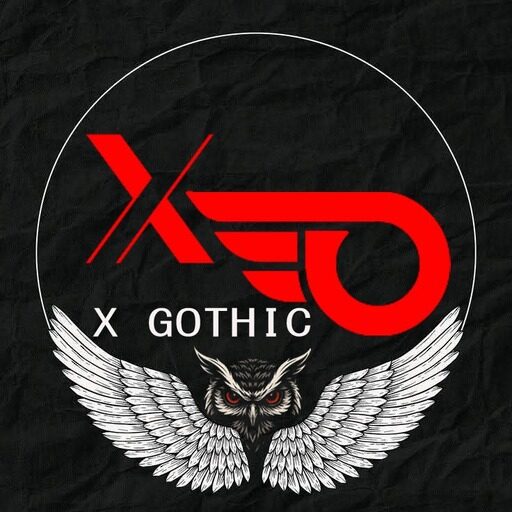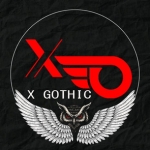The Evolution of Gothic Fashion: From Punk to Dark Elegance
The Fascinating Evolution of Gothic Fashion: A Journey Through Dark Elegance
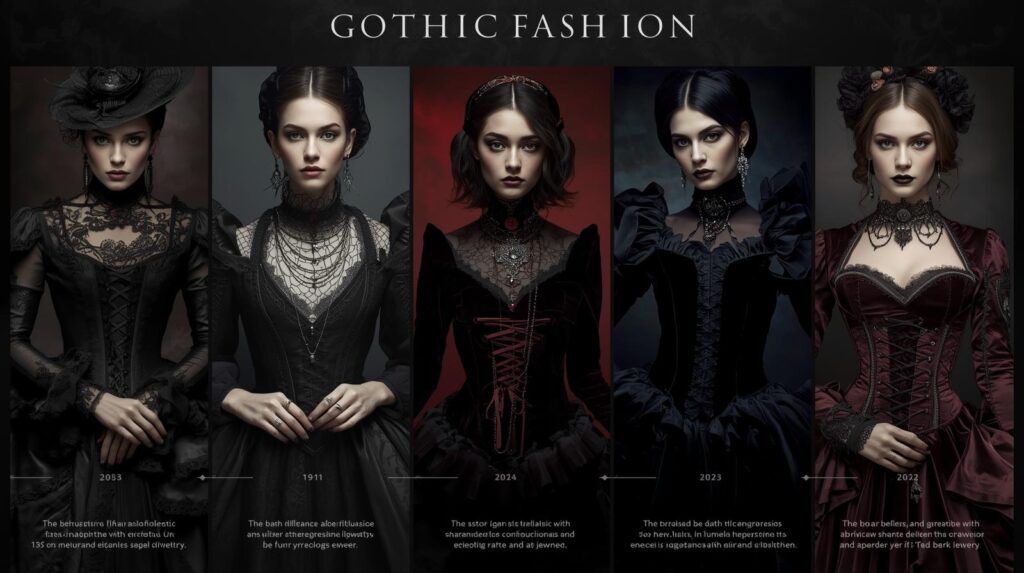
Introduction
Gothic fashion is a cultural style rooted in the Goth subculture, influenced by dark aesthetics, music, and individuality. It’s one of the most iconic and enduring movements in modern fashion.
The roots of gothic fashion can be traced back to the late 20th century, though its influences span across centuries, blending elements of Victorian, medieval, and punk styles.
At X GOTHIC, we embrace and celebrate this bold, evolving style. In this blog, we’ll explore when gothic fashion was invented, its evolution, and the key milestones that shaped this unique aesthetic.
The Origins of Gothic Fashion
The Birth of the Goth Subculture in the Late 1970s
Gothic fashion as we know it today emerged in the late 1970s, born from the underground punk rock scene. The punk movement, which had its roots in rebellion and anti-establishment sentiments, laid the groundwork for the formation of the goth subculture. However, gothic fashion evolved with its own distinct characteristics, diverging from the more chaotic and DIY approach of punk.
The early influences of goth fashion were primarily shaped by post-punk music and the bands that rose to prominence in the late 1970s and early 1980s. Groups like Bauhaus, Siouxsie and the Banshees, and Joy Division incorporated a darker, more introspective aesthetic into their music and imagery, which resonated with the youth of the time. The influence of these bands can be seen in the clothes worn by their fans, many of whom adopted a more theatrical, macabre style.
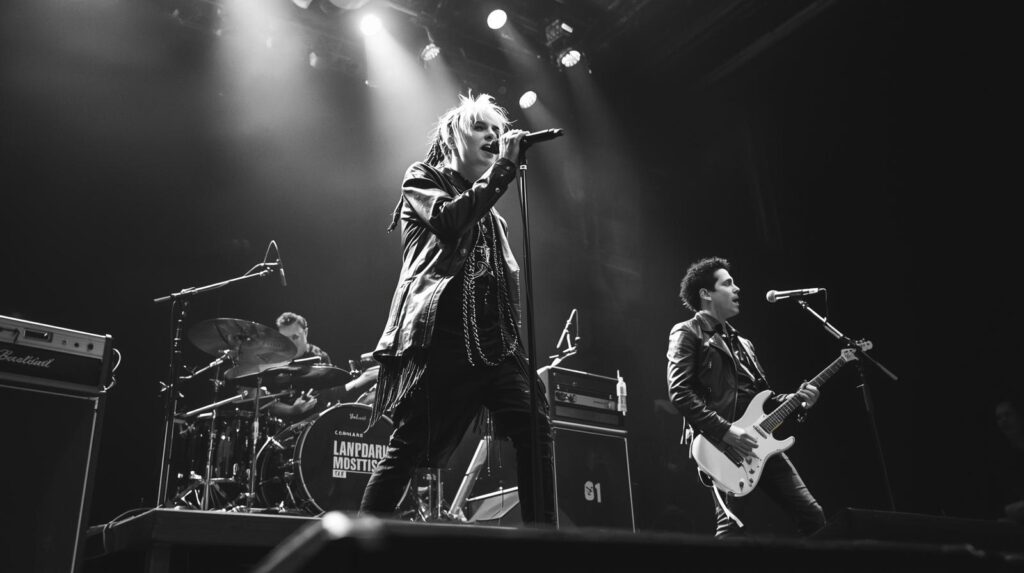
Victorian Influence and the Birth of Dark Elegance
The influence of the Victorian era played a crucial role in shaping early gothic fashion. The Victorian period, known for its elaborate clothing, lace, and corsets, contributed to the romantic, yet dark, elements of the goth style. The silhouette of the time, with its flowing skirts, tight corsets, and high collars, began to resurface in goth fashion.
As the goth subculture continued to develop in the early 1980s, the clothing became a reflection of the themes of death, melancholy, and romanticism. This period saw a fusion of Victorian-inspired pieces with darker, more modern aesthetics, such as black leather, lace, and dramatic accessories like chokers and silver jewelry. The dramatic makeup, particularly the pale face and dark eye makeup, became signature elements of goth fashion.
The Rise of Gothic Fashion in the 1980s and 1990s
Goth Fashion in the 1980s: Defining the Look
By the mid-1980s, goth fashion had firmly established itself as a distinct style. The fashion choices of goths were influenced heavily by the emerging gothic rock scene, which included bands like The Cure, The Sisters of Mercy, and Fields of the Nephilim. These bands, along with their fans, began to embrace dark, gothic imagery that extended beyond the music scene into the broader cultural landscape.
In the 1980s, the goth fashion aesthetic was characterized by the use of black clothing, often made from materials like velvet, lace, and leather. The layering of these materials, along with the introduction of fishnet stockings, boots, and dramatic makeup, helped define the goth look. The fashion was also influenced by horror films, which often featured gothic themes, such as vampires, ghosts, and other supernatural elements. The combination of these influences led to a style that was elegant, yet edgy, blending the beauty of Victorian fashion with a punk rebelliousness.
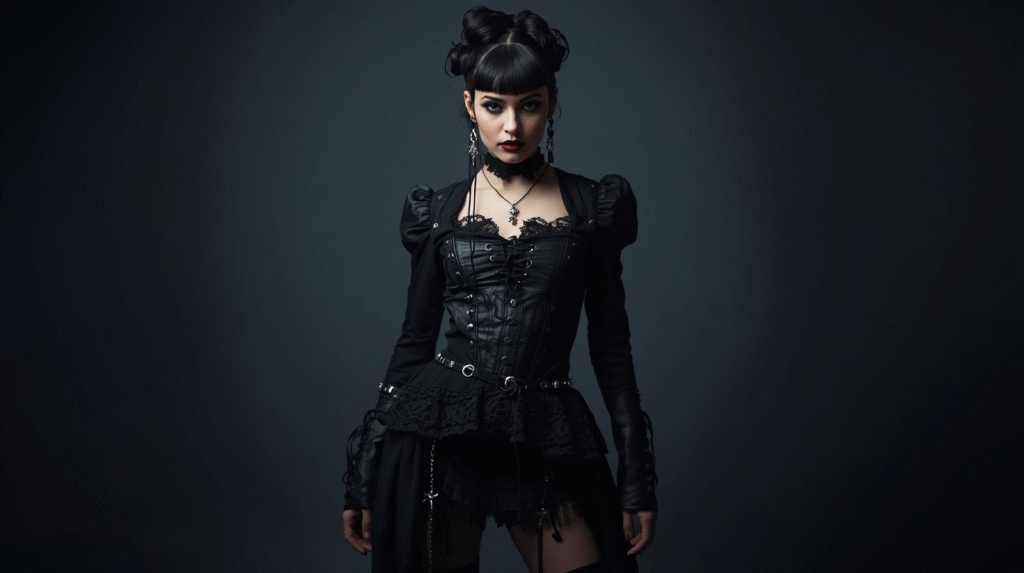
The 1990s: Goth Fashion Expands and Diversifies
The 1990s saw the goth subculture and its fashion evolve even further, becoming more diverse and accessible. With the rise of grunge music and the mainstreaming of alternative styles, goth fashion expanded to include a range of substyles, such as cyber goth, industrial goth, and romantic goth. These substyles were influenced by the different subcultures and genres that emerged in the 1990s, including industrial music, rave culture, and the growing popularity of gothic literature.
While the 1980s goth look was more closely associated with the punk aesthetic, the 1990s saw goth fashion take on a more refined and sometimes futuristic appearance. The introduction of metallic fabrics, black PVC, and shiny materials in the fashion scene further evolved the goth style. Accessories like silver chains, spikes, and chains became more prominent, and goth fashion was increasingly seen as a form of self-expression, with each individual putting their own spin on the look.
Gothic Fashion in the 21st Century
The Evolution of Modern Goth Fashion
Gothic fashion has remained a vibrant and evolving cultural movement, continuing to influence both mainstream and alternative fashion scenes. The 2000s and beyond saw the rise of new subgenres, including pastel goth, which introduced lighter hues like pale pink and lavender to the traditional black color palette. Pastel goth emerged as a playful, whimsical take on the traditional goth look, blending elements of kawaii (cute) fashion with gothic aesthetics.
Despite these changes, many of the core elements of gothic fashion have remained consistent. The use of black clothing, corsets, lace, fishnets, and dramatic makeup continues to be a hallmark of the goth subculture. However, in the 21st century, goth fashion has also become more inclusive, with many designers and brands embracing diversity in terms of body types, gender expression, and cultural influences.
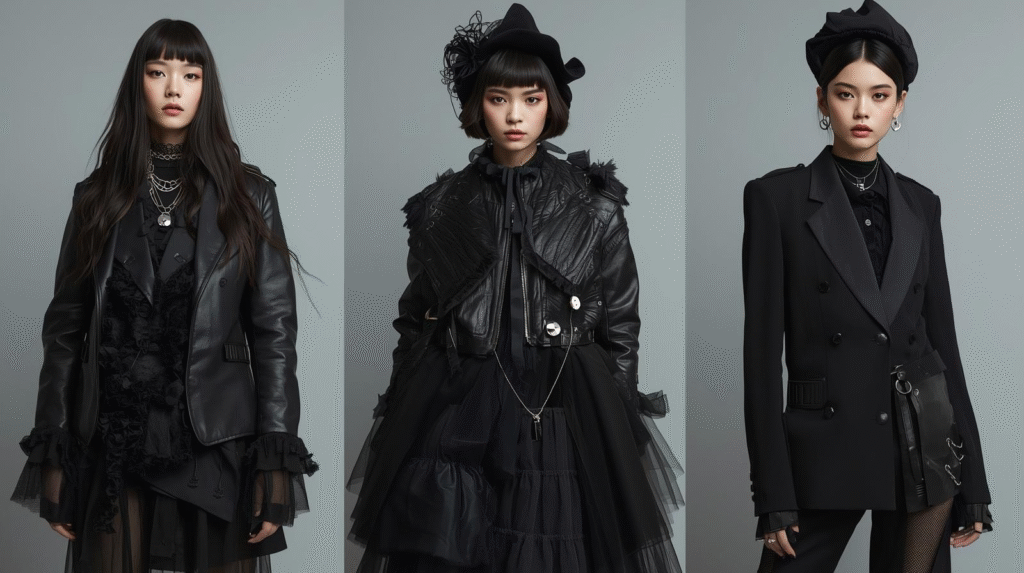
The Influence of Social Media and Digital Platforms
With the advent of social media platforms like Instagram, Pinterest, and TikTok, goth fashion has gained renewed popularity in recent years. Online communities and influencers have helped spread the aesthetic to a wider audience, leading to the growth of “online goth” and “digital goth.” Social media has allowed individuals to showcase their unique interpretations of the goth look, from avant-garde fashion to DIY clothing and accessories.
These platforms have also allowed goth fashion to influence high fashion, with designers like Alexander McQueen, Jean-Paul Gaultier, and Vivienne Westwood incorporating elements of gothic style into their runway collections. As a result, goth fashion has become more mainstream, though it still retains its subversive and countercultural roots.
The Philosophical Underpinnings of Gothic Fashion
Goth Fashion as a Statement of Individuality
Goth fashion is not just about clothes; it is a form of self-expression and an embrace of individuality. The goth subculture, with its roots in music and art, has always celebrated nonconformity and personal identity. Gothic fashion allows individuals to reject societal norms and embrace their uniqueness. The aesthetic is about exploring darkness, embracing the macabre, and celebrating the beauty in things that are often considered taboo.
The emphasis on individuality within the goth subculture means that there is no single “right” way to dress goth. The fashion is fluid, with each person adding their own personal touch to the look. Whether it is the choice of fabrics, accessories, or makeup, goth fashion provides a creative outlet for people to express their innermost selves, often through a lens of mystery, fantasy, and rebellion.
The Connection Between Gothic Fashion and Art
Gothic fashion is deeply intertwined with various art forms, including music, visual art, literature, and film. Many of the themes explored in gothic fashion—such as death, melancholy, romanticism, and rebellion—are also common motifs in Gothic literature and art. The aesthetic of gothic fashion can be traced to the dark, mysterious imagery found in the works of writers like Edgar Allan Poe, Mary Shelley, and Bram Stoker, whose works have inspired generations of goths.
In addition to literature, gothic fashion is also influenced by visual arts, particularly the surrealist and expressionist movements, which focus on the strange, eerie, and fantastical. The dramatic styling of goth fashion often mirrors these artistic movements, with clothing and accessories serving as a form of wearable art.
Frequently Asked Questions (FAQ) About Gothic Fashion
What is Gothic Fashion?
Gothic fashion is a distinctive style that emerged from the goth subculture, characterized by dark, often dramatic clothing choices. It blends elements of Victorian fashion, punk aesthetics, and romanticism. The fashion includes items such as corsets, lace, leather, fishnet stockings, and dramatic makeup.
When Did Gothic Fashion First Appear?
Gothic fashion first emerged in the late 1970s and early 1980s, as part of the goth subculture that developed alongside post-punk music. The style was influenced by bands like Bauhaus, Siouxsie and the Banshees, and Joy Division, and gradually evolved into a unique and recognizable fashion aesthetic. It became firmly established as a distinct style in the 1980s and continued to develop throughout the 1990s and beyond.
What are the Key Elements of Gothic Fashion?
The key elements of gothic fashion include:
- Black clothing: Black is the cornerstone of goth fashion, symbolizing darkness, mystery, and rebellion.
- Victorian and medieval influences: The fashion draws inspiration from the Victorian era and medieval times, featuring elements such as corsets, lace, and high collars.
- Dramatic makeup: Goths often wear pale makeup, with dark eyeliner, eyeshadow, and lipstick to create a striking contrast.
- Dark accessories: Silver jewelry, chokers, spikes, chains, and other accessories are common in goth fashion.
- Layered materials: Velvet, lace, leather, and fishnets are frequently used to add texture and depth to the look.
How Has Gothic Fashion Evolved Over Time?
Gothic fashion has evolved over the decades, incorporating new elements and diversifying into various subgenres. In the 1980s, the style was influenced heavily by the punk movement, while in the 1990s, it began to incorporate aspects of industrial, cyberpunk, and other alternative subcultures. Today, goth fashion continues to evolve, with new substyles like pastel goth, cyber goth, and nu-goth emerging, each adding their own twist to the classic dark and elegant look.
Conclusion: The Enduring Legacy of Gothic Fashion
Conclusion: The Enduring Legacy of Gothic Fashion
Gothic fashion is not just a style; it’s a cultural movement that has persisted through decades of change. It continues to inspire and influence fashion trends, embracing individuality and self-expression. Whether it’s the dramatic black clothing, Victorian-inspired elements, or avant-garde accessories, gothic fashion will continue to thrive as a creative, artistic, and rebellious movement.
At X GOTHIC, we are proud to offer bold, unique pieces that allow individuals to express their true selves and embrace the gothic aesthetic with confidence and style.
